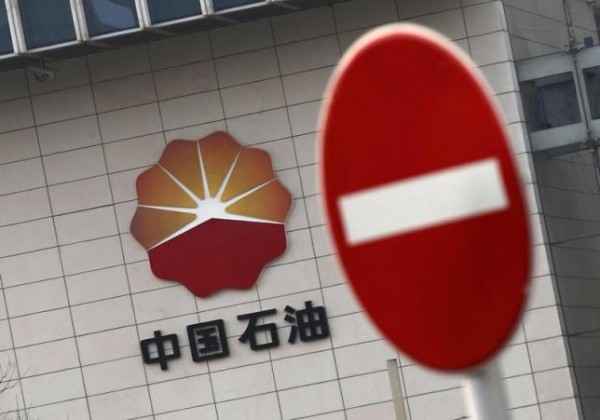PetroChina's Liabilities Amount to 1 Trillion Yuan
| Charissa Echavez | | Apr 11, 2016 04:05 PM EDT |
(Photo : Reuters) China's PetroChina Co. posted the highest liability among non-financial A-share companies with more than $1.05 trillion yuan ($162.8 billion).
PetroChina, the country's biggest oil producer, posted the highest amount of liabilities among all non-financial A-share firms with 1.05 trillion yuan ($162.8 billion), the worst in nearly two decades.
The state-owned oil company experienced its lowest dive, reporting a 67 percent plunge in net profit to 35.5 billion yuan.
Like Us on Facebook
According to state-run Securities Daily, the company posted the liability even though it has managed to reduce its debt ratio from 45.2 percent to 43.8 percent a year ago after chopping its total debts by 3.5 percent in 2015.
In December, PetroChina got regulatory approval to issue corporate bonds no more than 40 billion yuan, state news agency Xinhua reported.
The need for liquidity follows after oil enterprises posted a weaker year as a result of the slumping oil price. Brent crude, the standard for over 50 percent of the world's oil, also posted a 48 percent decline in 2015.
The other Chinese oil giant Sinopec also saw a 32.1 percent decrease to 32.2 billion yuan.
Securities Daily, citing management insiders, said that PetroChina's management is considering cost management. It reportedly plans to slash off capital expenditure to 23 percent or 155.7 billion yuan.
Moreover, experts reveal that oil companies are also reportedly looking at broadening ownership to keep lean. PetroChina allegedly sold its remaining natural gas reserves subsidiaries, including Changqing, Dagang, Huabei, Liaohe, Southwest and Xinjiang, to domestic petroleum administrations at 3.51 billion yuan.
The company posted a 26.7 percent plummet in cash flow to 261.32 billion yuan from operating expenditures and a 25.8 percent decrease from investment activities.
TagsOil, Brent, PetroChina, A-share firms, Sinopec, Petroleum, China National Petroleum Corporation
©2015 Chinatopix All rights reserved. Do not reproduce without permission
EDITOR'S PICKS
-

Did the Trump administration just announce plans for a trade war with ‘hostile’ China and Russia?
-

US Senate passes Taiwan travel bill slammed by China
-

As Yan Sihong’s family grieves, here are other Chinese students who went missing abroad. Some have never been found
-

Beijing blasts Western critics who ‘smear China’ with the term sharp power
-

China Envoy Seeks to Defuse Tensions With U.S. as a Trade War Brews
-

Singapore's Deputy PM Provides Bitcoin Vote of Confidence Amid China's Blanket Bans
-

China warns investors over risks in overseas virtual currency trading
-

Chinese government most trustworthy: survey
-

Kashima Antlers On Course For Back-To-Back Titles
MOST POPULAR
LATEST NEWS
Zhou Yongkang: China's Former Security Chief Sentenced to Life in Prison

China's former Chief of the Ministry of Public Security, Zhou Yongkang, has been given a life sentence after he was found guilty of abusing his office, bribery and deliberately ... Full Article
TRENDING STORY

China Pork Prices Expected to Stabilize As The Supplies Recover

Elephone P9000 Smartphone is now on Sale on Amazon India

There's a Big Chance Cliffhangers Won't Still Be Resolved When Grey's Anatomy Season 13 Returns

Supreme Court Ruled on Samsung vs Apple Dispute for Patent Infringement

Microsoft Surface Pro 5 Rumors and Release Date: What is the Latest?













